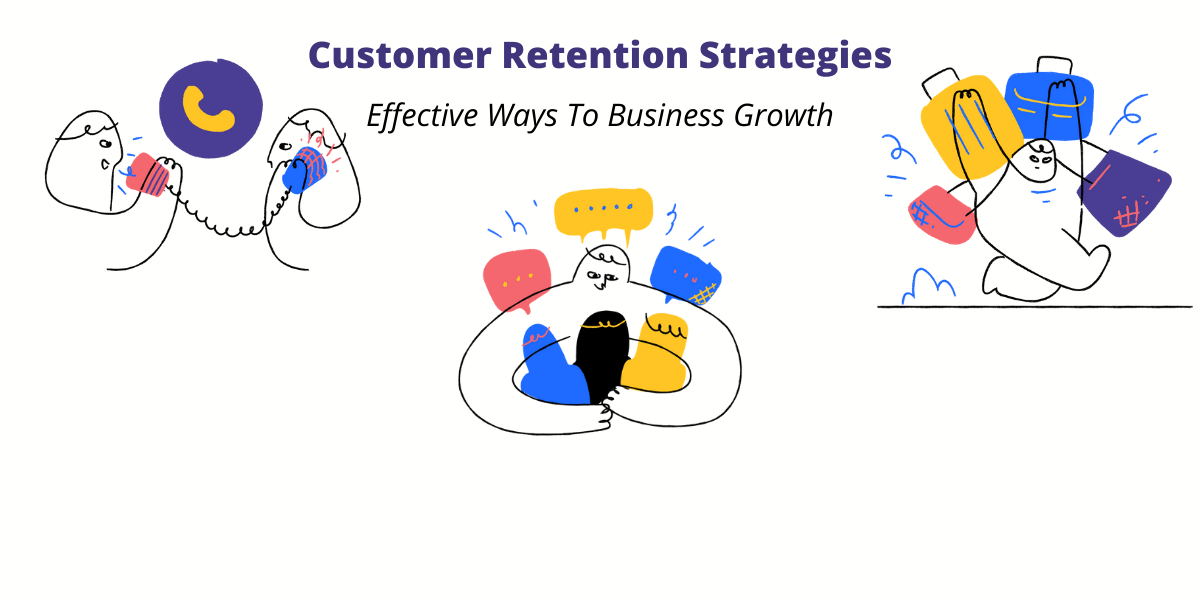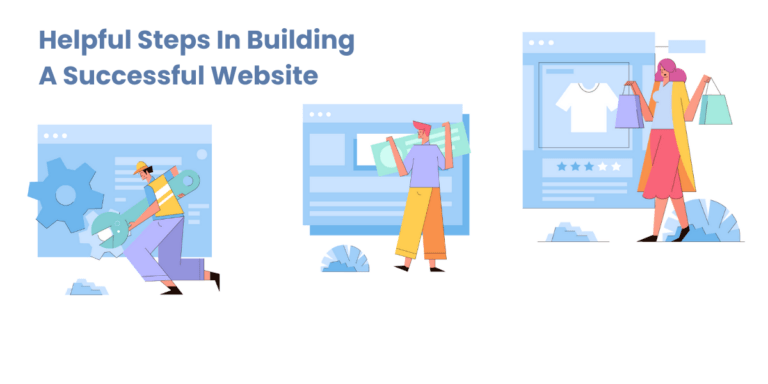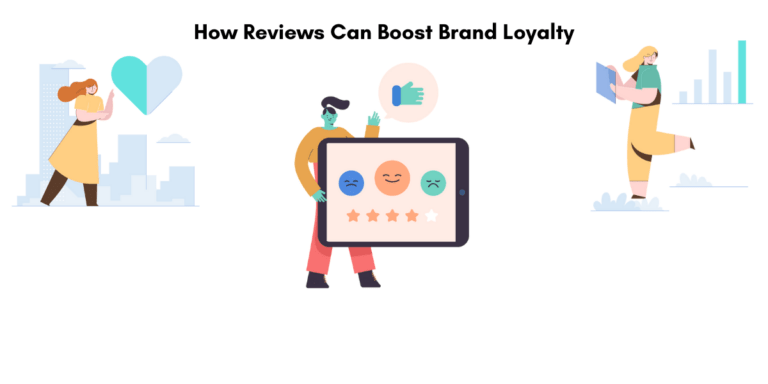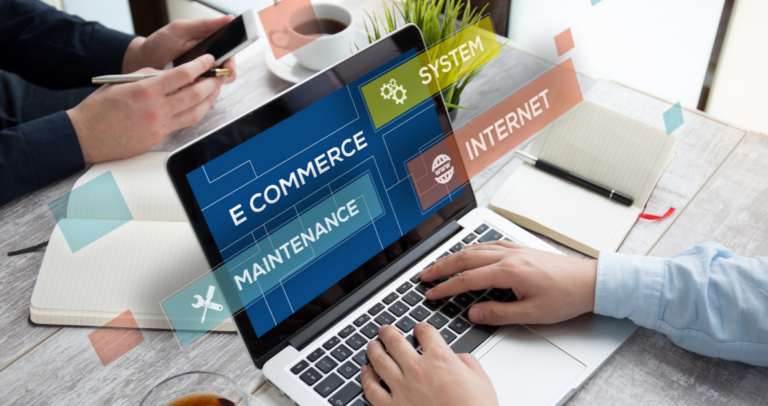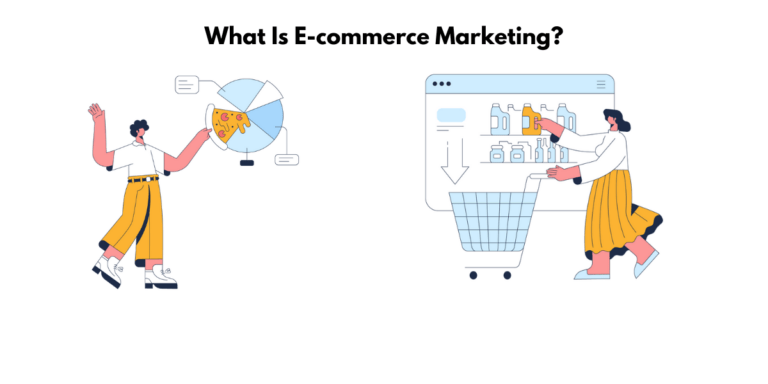Customer Retention Strategies: How to Keep Shoppers Coming Back For More
Customer Retention Strategies
The definition of a “loyal customer” has changed in the digital age. A loyal customer is no longer someone who sticks with your brand through thick and thin; instead, they are customers who have had a positive experience with your brand and are likely to continue doing business with you because of it.
That said, acquiring new customers can be 5-25 times more expensive than retaining existing ones. This is why it’s important to focus on retention strategies that will encourage your customers to stick with you.
Here are some retention strategies you can use to encourage loyalty and keep your patrons coming back for more.

What is customer retention?
Customer retention is increasing a business’s repeat customer rate and extracting additional value from those customers.
Customer retention aims to ensure that customers continue making repeat purchases, are satisfied with a company’s services, and do not defect to competitors. Customer retention can be achieved through various strategies, such as rewarding loyal customers with discounts or special offers, providing excellent customer service, and building brand loyalty. By implementing these strategies over time, companies can increase their repeat customer rate and gain greater value from their existing customers.
What are the benefits of customer retention?
Customer retention is important for any business. It costs five times as much to acquire a new customer than to keep an existing one, and increasing customer retention rates by 5% can increase profits by 25% to 95%. There are many benefits of customer retention, including:
To increase profits
Customer retention can increase profits by reducing marketing costs. Studies show that it is far cheaper to keep an existing customer than to find new ones. This is because marketing is costly, and engaging an existing customer leads to increased spending on the business.
By retaining customers instead of finding new ones, businesses can improve their profitability through reduced marketing costs and increased spending from repeat customers.
To improve customer experience
Customer retention can improve customer experience by providing fast support, personalizing interactions, investing in employees, meeting customers where they are, gathering customer feedback, and incentivizing loyalty.
By doing so, customers will feel valued and listened to; they will be more loyal to your business and willing to spend more from you if they have a good experience. Additionally, consistent support across all channels will impress customers since it is one of their top expectations. Finally, gathering customer feedback allows you to identify issues that need to be fixed to provide a better experience for them overall.
To reduce churn rates
Reducing customer churn can have a dramatic impact on your revenue growth. By reading the signs that customers are about to leave and taking proactive steps to improve their experience, you can reduce your customer churn rate and increase revenue.
By reducing customer churn rates, you will be able to generate more revenue over time than if you did not implement retention strategies. For example, if your current monthly recurring revenue is $15,000 with a 3% churn rate over five years, reducing that rate by 10% could add an extra $100K in revenue over that period. Reducing it by 30% could also result in an additional $300K of extra revenue over five years.
To increase customer satisfaction
Customer retention can help increase customer satisfaction by providing consistent support across all channels, knowing the top issues your customers are facing and taking active steps to fix them, and offering a better experience with better quality products or services.
By doing so, customers will feel valued and appreciated for their business as they know you care about them. This will lead to increased customer satisfaction as they will be more likely to remain with your business for longer. Furthermore, providing great customer service experiences can also make a lasting impact on customers, as 55% of consumers would pay more for a better customer experience.

To improve customer loyalty
Customer retention can improve customer loyalty by making interactions more convenient, personal, and rewarding.
When customers feel appreciated and valued, they are more likely to be loyal in return. By providing a positive customer experience that meets the needs of individual customers, you can build trust and encourage them to become repeat spenders.
To increase brand loyalty
Customer retention can help increase brand loyalty by providing customers with a long-term feel-good factor. By knowing that their purchase contributes to a good cause, customers will be more likely to make future purchases.
This creates a positive association between the brand and the customer, increasing customer loyalty. Happy customers are more likely to recommend your brand, and they are also more likely to repeat customers. Therefore, having a solid customer retention policy can have beneficial effects on word-of-mouth marketing campaigns as well as overall brand loyalty.
To increase word-of-mouth referrals
Customer retention can help increase word-of-mouth referrals by building consumer confidence. When customers hear positive word-of-mouth messages about your brand from loyal customers, they are more likely to be persuaded to become a customer themselves or continue purchasing from you.
By encouraging customer retention and providing opportunities for loyal customers to share their experiences with others, you can create a domino effect of positive word-of-mouth that will bring in new business and retain existing customers.
To implement a customer retention program
Implementing a customer retention program can help build trust, create a robust loyalty program, leverage customer data, re-engage customers using marketing automation, measure customer lifetime value, and personalize offers and communications. By implementing these strategies, your brand can foster long-term customer relationships and increase ROI from your loyalty programs. Furthermore, you can better tailor offers that are more relevant to each customer’s needs by understanding customer preferences and motivations without always having to ask through the collection of data such as transaction histories and loyalty program information.
To increase the average order value
Customer retention can increase average order value by encouraging repeat purchases and maximizing the amount each transaction is worth.
By tracking customer repeat purchase rate and frequency, retailers can measure how much revenue each order generates. This will help them understand how increasing customer retention impacts their average order value over time.
To reduce marketing costs
Customer retention can reduce marketing costs by cultivating loyal customers. Loyal customers spend 67% more on average than new customers, so it is more profitable and less expensive to focus on retaining existing customers than acquiring new ones.
This can positively affect marketing costs as companies will not need to spend as much money on advertising or other customer acquisition strategies if they can increase loyalty among their existing customer base.

Different types of customer retention strategies
There are a lot of different retention strategies out there. Which one is the right one for your business?
It depends on your product, your customers, and your goals.
In this post, we’re going to look at the different types of retention strategies and when you should use them.
Loyalty programs
A loyalty program is designed to reward customers for their purchases, loyalty, and brand engagement. It can take the form of points, tiers, or rewards that can be redeemed for merchandise or discounts.
Loyalty programs can greatly benefit customer retention as they help you build an emotional connection with your customers. Giving them special offers and rewards makes them feel appreciated and motivates them to keep coming back. Also, loyal customers have a 306% higher lifetime value than non-loyal customers, so fostering better relationships with them through a loyalty program makes sense. Furthermore, these programs are inexpensive to implement but can significantly increase CLTV since you have access to more detailed customer data, which enables personalized rewards and offers for your shoppers.
Offers and rewards
For customer retention, there are a variety of offers and rewards available. These include:
- Discounts for referrals: Giving customers a discount for referring friends or family to your brand can effectively get them to return and bring new customers.
- Redeemable points: Accumulating redeemable points for each purchase can encourage repeat business as customers work towards earning a reward.
- Visual appreciation boost: An appreciation boost in the form of a badge or other visual recognition can motivate customers by showing them how much they have benefited your company over time.
Personalized experience
Personalized experiences can help customer retention by making the customer feel valued and appreciated. It creates a sense of connection between the customer and the business, leading to increased loyalty and trust in the brand.
By providing personalized solutions tailored to each customer’s needs, you can advance your relationship with them while increasing their satisfaction with your product or service. This will likely lead to increased loyalty from customers who feel they are being taken care of properly, resulting in higher conversions and fewer cancellations/refunds.
Customer feedback loop
The customer feedback loop provides a system for collecting, analyzing, and distributing customer reviews and surveys. It allows businesses to gain insight into customer behavior and address issues with their product or service.
By using this system to collect and share customer reviews, businesses can efficiently address criticism and improve the customer experience. This helps retain customers by improving their experience with your business and showing that you care about providing them stellar service.
Customer engagement
Customer engagement is understanding customers’ needs and preferences and providing personalized service.
When businesses understand how their customers interact with their brands across multiple channels, they can optimize their processes to provide a more seamless experience. This leads to increased customer satisfaction and acts as a great customer retention solution. Businesses can keep customers longer while attracting new ones by treating each customer individually and providing personalized attention.
Brand loyalty metric
Branding loyalty can help with customer retention by providing customers with trust signals such as product reviews. By setting up a system for a consistent supply of genuine customer reviews, businesses can create an emotional connection with their customers that encourages them to remain loyal.
By providing customers with a platform where they feel valued and appreciated, businesses can increase customer retention rates and improve their bottom line by ensuring that customers are satisfied with their products or services. Additionally, brands with high brand loyalty tend to have higher customer retention rates due to the positive feelings associated with the brand name.
Best practices
For customer retention, here are some of the best practices you can apply to your business:
- Adopt customer service tools: It is important to have the right tools in place to help you better engage with customers and provide them with a great experience. These tools can include customer support platforms, chatbots, email campaigns, surveys, and more.
- Apologize when you make mistakes: It is important to acknowledge any mistakes you make and apologize for them promptly to maintain trust with your customers.
- Inspire with a mission: Communicate your company’s mission clearly and regularly so that customers know why they should continue doing business with you rather than switching providers or terminating their membership entirely.
- Empower customers with convenience: Offer convenience features such as online payments or delivery options to make it easier for customers to do business with you on their terms rather than yours if they choose not to subscribe.
- Leverage personalization: Personalize interactions by using data collected through customer interactions or other sources like social media accounts or emails to create tailored experiences more likely to resonate better with individual customers.
- Speak To Your Customers: Make sure that there is open communication between both parties so that both sides understand each other’s needs more clearly.
Personalization
Personalization is the process of creating individualized experiences for customers based on their preferences and behaviors.
Personalization can be used to retain customers by providing them with customized content, products, services, and interactions. Personalizing customer interactions help build trust and rapport with customers by showing that you understand their needs. It also helps you understand what motivates them to purchase from you instead of competitors. Personalization can be implemented across multiple channels such as emails, live chats, webpages, or other platforms where customers interact with your brand.
Customer service tools
Customer service is one of the most important aspects of customer retention, and there are several tools that businesses can use to improve their current customer service. Live chat software, for example, allows businesses to communicate with customers in real time, which can help to resolve any issues they may have. Social media monitoring tools can also track customer sentiment and identify areas where improvement is needed.
It’s also important to ensure your returns policy is as customer-friendly as possible. In today’s world of online shopping, customers expect to be able to return items they’re not happy with, and a lenient returns policy can be a major factor in client retention.
Marketing tactics
There are many different retention strategies, but one common thread among them is retention marketing tactics to keep shoppers returning for more. This could involve loyalty programs, rewards, targeted marketing campaigns, and special offers.
The most effective customer retention strategy is simply making it easy for customers to do business with you. This could mean offering convenient payment options.

How to implement customer retention strategies in your business
As a business owner, you know that happy customers are the lifeblood of your company.
But you may not realize that it costs six to seven times more to acquire a new customer than to retain an existing one.
That’s why customer retention should be a key focus in your business.
The good news is there are plenty of simple strategies you can implement to keep your customers returning for more.
Here are just a few:
Step 1: Adopt customer service tools
Adopting customer service tools such as apologizing when mistakes are made, inspiring with a mission, empowering customers with convenience, leveraging personalization, speaking to customers, and creating a divide between you and competitors can help you implement retention strategies.
By adopting customer service tools such as these, you can build trust with your customers, offer incentives before they can terminate their membership, and surprise them with positive experiences that elicit positive feelings. Additionally, providing support on the right platforms and educating them will help keep them loyal to your brand. Finally, by forming a community around your product or service or offering a one-of-a-kind product that solves their problems without every problem being solved – retention strategies can be implemented effectively using these tactics.
Step 2: Collect feedback from customer surveys
Customer surveys can help implement retention strategies by providing organizations valuable customer feedback. This allows them to identify areas of dissatisfaction and take action to improve the customer experience.
By using customer surveys regularly and analyzing the results, businesses can identify trends in customer behavior and other areas that need improvement. This will help them quickly address criticism and retain customers by improving their online experience.
Step 3: Leverage personalization
Personalization helps implement retention strategies by providing tailored solutions to individual customers. It allows businesses to understand customer behavior across platforms and creates a more personalized experience for each customer.
Businesses can build rapport and loyalty with their customers by providing relevant and personalized offerings. Endearing relationships with customers will encourage them to continue doing business with you, as they feel valued and appreciated for their unique needs. Furthermore, personalization can help advance customer relationships by 99%, according to Evergage’s survey findings.
Step 4: Implement a customer feedback loop
Implementing a customer feedback loop can help with customer retention by providing your business with the necessary information to address criticisms and improve the customer experience.
By gathering customer feedback through surveys, user testing, and phone system comments after each call or interaction, businesses can identify areas for improvement and take action to create long-term relationships with their customers.
Step 5: Communicate with your customers
Communication with customers can help implement customer retention strategies in your business by understanding their needs and preferences. By engaging with customers through every channel, including social media, email, and surveys, you can gain insights into their thoughts on your products or services and address any issues they may be having.
By communicating regularly with customers and taking action when necessary, you can ensure that existing customers are satisfied with the experience they are getting from your brand. This will encourage them to stay loyal to your brand longer term while also helping to identify potential opportunities for upselling or cross-selling additional products or services.
Step 6: Use subscriptions to bolster the experience
Using subscriptions can help bolster customers’ experience by repeatedly providing them with products or services.
By signing up for a subscription, customers will become familiar with the product or service and feel more invested in it. They will also appreciate the convenience of having it delivered to them regularly, potentially leading to positive feelings toward your brand. Furthermore, offering incentives such as discounts or special offers can further increase customer loyalty.
Step 7: Deliver surprise reciprocity
Delivering surprise reciprocity can be a powerful way to build customer loyalty and encourage repurchases and recommendations. It’s no wonder that consistently good service is one of the biggest drivers of repurchases and recommendations—when someone is treated nicely, they respond nicely.
By delivering unexpected gestures such as thank-you notes, swag, or “huzzah” images in their product, businesses can create reciprocity with their customers. This will make them more likely to stick around since it makes them feel special and cared for. Additionally, small gestures such as returning with mints or providing illustrations in inboxes can make customers feel good about using your product which will also help retain them long term.
Step 8: Offer unique services
Offering a product or service that’s superior to your competitors in the eyes of your customers is a great way to retain them.
By offering a product or service that solves a pain point for customers and is unique compared to competitors, you can create loyalty with your customers. They will appreciate your value and be more likely to stick with you instead of switching to another vendor.
Step 9: Use experiences to elicit positive feelings
Creating positive experiences for your customers is a key part of retaining them. Make sure that every interaction they have with your business is positive, from the first time they visit your website to when they receive their purchase.
Think about what kind of experience your customers want and work backward from there. If you can create a positive, memorable experience for them, they’re more likely to come back for more.
Step 10: Capitalize on social proof
As a business owner, you know that customer retention is key to success. After all, it costs far more to acquire new customers than to keep existing ones happy and to come back for more. But how do you go about implementing customer retention strategies in your business?
One effective way to keep shoppers returning is to capitalize on social proof. This means leveraging the power of testimonials, reviews, and social media mentions to show potential customers that others have had positive experiences with your business. You can also offer incentives for repeat business, such as loyalty programs or referral discounts.
Step 11: Accept that speed is secondary to quality
When your business understands that speed is secondary to quality, it can implement customer retention strategies that consider the importance of courteous, helpful, and timely service. By setting customer expectations early and consistently exceeding them, you can ensure positive experiences leading to greater loyalty and fewer churn rates. Additionally, by being conservative with your estimates in terms of what you’ll be able to deliver to customers and always offering more value than expected, you’ll create a no-brainer experience for your customers that will encourage them to return again and again.
Step 12: Build loyalty programs the right way
Building loyalty programs is one of the most effective customer retention strategies. But if you want your loyalty program to be successful, you must build it correctly.
Here are a few tips to help you build a successful loyalty program:
- Make sure your loyalty program is simple and easy to understand.
- Offer rewards that are valuable to your customers.
Step 14: Thank the customers
Saying thank you to customers can help to implement customer retention strategies in your business by showing them that they are valued and appreciated. It sets your brand apart from faceless websites and creates a memorable experience that makes customers want to return again and again.
By thanking customers for their feedback, you’re showing them that their opinions matter and making them feel heard. This can lead to more satisfied customers who are more likely to stay loyal to your brand. Additionally, when you make changes to resolve an issue pointed out by a customer, thanking them for their feedback shows them that they made a difference in helping improve the product or service they use. This encourages customers to continue providing feedback and encouraging other potential clients who read about it online or hear about it through word-of-mouth referrals.

FAQs
Here are some of the most frequently asked questions about customer retention strategies:
What is a customer retention tool?
A customer retention tool is a tactic businesses use to reduce the number of customers lost in a period and improve their experiences to increase customer loyalty.
Customer retention programs can be company-led, such as instituting a customer onboarding process, or customer-led, such as downloading and using a mobile app to make purchases. These tools can include anything from special offers and discounts to loyalty programs that reward customers for their continued use of the product or service.
What leads to customer retention?
Customer retention is a key aspect of any business, as it has numerous benefits, such as leads, sales, and profits.
Focusing on customer retention can convert your leads into loyal customers who are more likely to come back for your products and services. This will lead to an increase in profits and the overall success of your business. Additionally, by taking care of your customers and building a cordial relationship with them, you can reduce the risk of losing them due to a lack of satisfaction.
How do you calculate your customer retention rate?
There are some ways to calculate your customer retention rate. The most common method is to take the number of customers you had at the beginning of a period (usually a year) and divide it by the number of customers you had at the end of that period. This will give you your customer retention rate for that year.
Another way to calculate your customer retention rate is to take the number of customers you acquired during a period and divide it by the number of customers you had at the end of that period. This will give you your customer retention rate for that period.
How can a company improve retention?
There are many ways that companies can improve customer retention. Some common strategies include offering incentives for loyalty, providing excellent customer service, and making it easy for customers to do business with the company. By offering loyalty rewards, companies can encourage customers to keep coming back. Excellent customer service is also important in keeping customers happy and satisfied with their purchases. Finally, making it easy for customers to do business with the company, such as by providing online ordering or easy returns, can help to keep them coming back.
- Elevate Your Brand Online: Key Marketing Tactics for Online Branding Growth - February 27, 2025
- Drive Sales: Expert E-Commerce Marketing Strategies and Techniques Revealed - January 30, 2024
- Customer Retention Strategies: How to Keep Shoppers Coming Back For More - April 17, 2022

